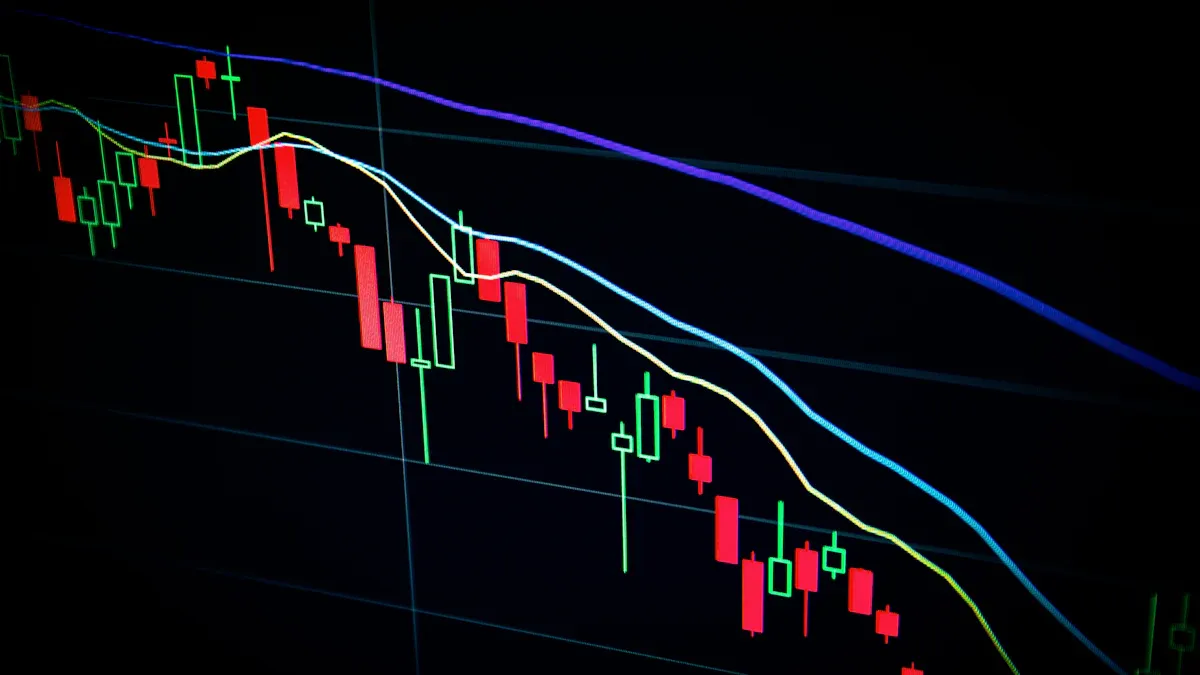- EasyCard
- Trade
- Help
- Announcement
- Academy
- SWIFT Code
- Iban Number
- Referral
- Customer Service
- Blog
- Creator
Beginner’s Guide: Hong Kong Stock Market Trading Hours and Procedures

Image Source: unsplash
When you first start exploring Hong Kong stocks, your primary concern is likely the trading hours. You can quickly understand the main sessions through the table below:
| Session | Time |
|---|---|
| Pre-opening | 9:00 - 9:30 |
| Morning Session | 9:30 - 12:00 |
| Afternoon Session | 13:00 - 16:00 |
| Closing Auction | 16:00 - 16:10 |
You will notice that Hong Kong stock trading hours differ from those of Chinese A-shares. For example, Hong Kong stocks follow a T+0 trading system, allowing you to sell stocks on the same day you buy them. A-shares, however, require waiting until the next trading day to sell. Hong Kong stocks have variable lot sizes, no price fluctuation limits, and are settled in HKD. A-shares have a fixed lot size of 100 shares, a 10% price fluctuation limit for regular stocks, and are settled in RMB.
Key Points
- Hong Kong stock trading hours include pre-opening, morning, afternoon, and closing auction sessions, with a T+0 trading mechanism, allowing same-day buying and selling, and longer trading hours than A-shares.
- Hong Kong stocks have variable lot sizes, no price fluctuation limits, and trading fees include commissions, stamp duty, etc., which you should understand clearly before investing to control costs.
- Account opening requires identity and address proof; you can choose Hong Kong brokers or the Stock Connect channel, and after completing a risk assessment, you can deposit funds to start trading.
- Holidays and severe weather affect Hong Kong stock trading; you need to check the announcements on the Hong Kong Stock Exchange (HKEX) website and plan your trading to avoid missing key opportunities.
- Investing in Hong Kong stocks requires risk management, including setting stop-loss plans, diversifying investments, staying rational, and avoiding emotional trading to enhance confidence and effectiveness.
Hong Kong Stock Trading Hours

Image Source: pexels
Specific Sessions
When investing in Hong Kong stocks, you first need to understand the detailed schedule of trading hours. The Hong Kong stock market is divided into multiple sessions daily, each with different trading rules and functions. The table below helps you quickly grasp the specific times and key details of each session:
| Trading Session | Time | Description |
|---|---|---|
| Pre-opening Session | 9:30 - 10:00 | Includes three sub-stages |
| First Stage | 9:30 - 9:45 | Investors can place buy and sell orders |
| Second Stage | 9:45 - 9:50 | Only cancellations allowed, no new orders |
| Third Stage | 9:50 - 9:58 | System matches orders, only cancellations accepted |
| Pause | 9:58 - 10:00 | Trading paused, market opens at 10:00 |
| Morning Session | 10:00 - 12:30 | Official trading time |
| Afternoon Session | 14:30 - 16:00 | Official trading time |
| Closing Auction Session | 16:00 - 16:10 | Closing price auction matching |
You need to note that Hong Kong stock trading hours have special arrangements during public holidays and severe weather. During holidays like Christmas, New Year’s Day, and the Lunar New Year’s Eve, the Hong Kong stock market typically operates for half a day, with the afternoon session suspended, and it is not a settlement day. In extreme weather like typhoons or black rainstorm warnings, the HKEX may suspend trading temporarily. Although the HKEX has recently worked to maintain normal market operations during severe weather, you should still monitor the latest announcements on the HKEX website and adjust your investment plans accordingly.
Tip: You can check the HKEX’s annual trading calendar in advance to plan your trading and avoid missing critical operations due to special circumstances.
Comparison with A-shares
When learning about Hong Kong stock trading hours, you often compare them to the A-share market. The two markets have clear differences in trading hour arrangements. The table below helps you compare them visually:
| Market | Morning Open | Morning Close | Lunch Break | Afternoon Open | Afternoon Close | After-Hours Trading | Trading Mechanism |
|---|---|---|---|---|---|---|---|
| A-shares | 9:30 | 11:30 | 11:30-13:00 (short) | 13:00 | 15:00 | 15:00-15:30 closing auction | T+1 |
| Hong Kong Stocks | 9:30 | 12:00 | 12:00-13:00 (long) | 13:00 | 16:00 | 16:00-17:00 after-hours trading | T+0 |
You will notice that Hong Kong stock trading hours are longer than A-shares, with a slightly different lunch break. Hong Kong stocks close at 16:00, an hour later than A-shares. Hong Kong stocks use a T+0 trading mechanism, allowing you to buy and sell on the same day, while A-shares use T+1, requiring you to wait until the next trading day to sell. Additionally, Hong Kong stock holidays align more with international markets, while A-shares follow China’s statutory holidays.
When trading, you must pay attention to changes in Hong Kong stock trading hours, especially during holidays and severe weather, to better manage investment risks and improve trading efficiency.
Trading Rules
T+0 and T+2
When trading in the Hong Kong stock market, you encounter T+0 and T+2 settlement mechanisms. The following ordered list clarifies these:
- The T+0 mechanism allows you to sell stocks bought on the same day, enabling flexible multiple trades.
- The T+2 mechanism means that after completing a trade, funds and stocks are settled on the second business day, so the actual delivery occurs on T+2.
- Regular Hong Kong stocks generally follow T+2 settlement, but you can trade with T+0 turnover. Some warrants and bonds may use T+0 settlement.
- During the T+2 settlement period, you can continue trading stocks, but actual ownership transfers on T+2.
- This mechanism affects your trading strategy and risk management but does not alter the fundamental investment attributes of stocks.
Lot Size
When buying and selling Hong Kong stocks, lot sizes are not uniform. Lot sizes are set by the issuing company, ranging from 100 to several thousand shares. For example, some stocks have a lot size of 400 shares, others 1,000, 2,000, or 4,000 shares. You need to check the lot size of a specific stock before placing an order. Compared to A-shares’ fixed 100-share lot size, Hong Kong stocks offer more flexible trading units, allowing you to choose investment targets based on your funds.
Tip: The HKEX is discussing reducing lot sizes, which may allow you to invest in high-priced stocks with less capital in the future.
Price Restrictions
The Hong Kong stock market has no uniform price fluctuation limits. You will find that stock prices are driven by market supply and demand, with no fixed daily price caps. Some special products may experience significant volatility, but the overall market has no uniform price restrictions. You should monitor price fluctuation risks during trading and set reasonable stop-loss and take-profit levels.
Fee Details
When trading Hong Kong stocks, you need to understand various fees. The table below outlines the main fee types and standards (based on 1 USD = 7.8 HKD, actual fees depend on broker announcements):
| Fee Type | Fee Standard and Description |
|---|---|
| Commission | Up to 0.3% of transaction amount, minimum ~$0.64 (5 HKD) |
| Stamp Duty | 0.1% of transaction amount, minimum ~$0.13 (1 HKD), paid by both buyer and seller |
| Trading Fee | 0.00565% of transaction amount, paid by both buyer and seller |
| Transaction Levy | 0.0027% of transaction amount, paid by both buyer and seller |
| Handling Fee | 0.0042% of transaction amount, paid by both buyer and seller |
| Other Fees | Includes share transfer fees, settlement fees, etc., subject to broker and HKEX announcements |
Before investing, calculate all fees in advance to accurately assess your trading costs and returns.
Trading Procedures

Image Source: pexels
Account Opening Steps
To invest in Hong Kong stocks, you first need to open a Hong Kong stock account. Account opening options include Hong Kong brokers or the Stock Connect channel. The following outlines the common account opening process:
- Choose a broker. You can research online or get recommendations from friends to compare brokers’ services, fees, and trading products. Hong Kong local brokers offer comprehensive services, while online brokers have lower fees.
- Prepare account opening documents. You need an ID, Hong Kong/Macau pass or passport, address proof (e.g., utility or phone bill), bank card, phone number, and email. Some brokers require A-share securities account details (e.g., for Stock Connect).
- Submit the application. Log in to the broker’s website or app, register, fill in personal details, and upload identity and address proof. Some brokers offer fully online verification, while others require an in-person appointment for identity checks.
- Complete risk assessment and knowledge test. You need to complete an online risk assessment and Hong Kong stock knowledge test to ensure you understand market risks and rules.
- Await review. The broker reviews your documents, typically notifying you of account details and initial password within 1-2 business days.
- Deposit funds. Purchase foreign currency, convert funds to HKD (USD to HKD rate ~1:7.8), and transfer to the broker’s account via a Hong Kong bank.
Tip: If you choose the Stock Connect channel, you can activate it within an existing A-share account without opening a new one, but trading options are limited, and fund settlement follows Chinese rules.
Deposits and Currency Conversion
After successfully opening an account, you need to transfer funds to your Hong Kong stock account. Common deposit and conversion methods include:
- Bank-securities transfer. You can link a Hong Kong bank account to the broker’s system for instant transfers, though supported banks and brokers are limited, suitable for traditional operations.
- eDDA deposit. Bind a Hong Kong bank account in the broker’s app and authorize; approval takes minutes, with funds arriving within 5 minutes, no need to upload transfer proof. Ensure name spelling matches the bank account.
- FPS (Faster Payment System). Obtain the FPS code in the broker’s app and transfer via a Hong Kong bank app. First-time transfers require uploading a proof screenshot, with arrival speed depending on timing.
- Online banking transfer. Transfer via Hong Kong bank online banking and upload a proof screenshot; arrival speed is similar to FPS, suitable when other methods are unavailable.
You should prioritize bank-securities transfers or eDDA deposits for convenience. If your account holds HKD and USD, you can freely convert within the broker’s account without fees, facilitating investment in both Hong Kong and U.S. stocks.
Tip: Verify account details during deposits to ensure fund safety. Some brokers support multi-currency accounts, with conversion rates based on real-time bank quotes.
Order Placement Methods
You can place Hong Kong stock orders through various channels and methods, including:
- Stock Connect. You can trade Hong Kong stocks directly through an A-share account without opening a Hong Kong account. Activating Stock Connect requires a securities and fund account balance of at least USD 64,100 (~RMB 500,000, based on 1:7.8 exchange rate).
- QDII funds. If you don’t meet Stock Connect’s fund threshold, you can invest indirectly in Hong Kong stocks via QDII funds with no minimum fund requirement.
- Order types. You can choose limit orders for competition (for pre-opening and closing auction sessions) or enhanced limit orders (for continuous trading sessions). Limit orders for competition are matched based on price and time priority, while enhanced limit orders execute at the specified or better price.
- Trading units. Hong Kong stocks use “lots” as the minimum trading unit, with lot sizes set by the listed company. You can only buy whole lots, and odd lots (less than one lot) can only be sold, not bought.
Note: Stock Connect investors can sell Hong Kong stocks on the same day as purchase, offering high trading flexibility. When placing orders, ensure compliance with minimum price increments and price range limits to avoid order failures due to improper pricing.
Settlement Process
The Hong Kong stock settlement process differs from A-shares, with the main steps as follows:
- Initiate IPO. The process begins with a new stock issuance.
- Confirm subscription funds. Hong Kong banks or brokers confirm your subscription funds have arrived.
- Lottery and allocation. The system processes subscription applications, removes duplicates or insufficient funds, and allocates shares via lottery.
- Fund settlement. The issuer collects payment for allocated shares from the broker.
- Regulatory approval. Regulators confirm and approve each settlement stage via the FINI platform.
- Share registration and trading. After share registration, stocks are officially listed for trading on the exchange.
The HKEX’s FINI platform significantly improves settlement efficiency, reducing the cycle from T+5 to T+1. After completing a trade, funds and stocks settle on T+2, allowing you to freely manage funds and stocks thereafter.
Precautions
When opening a Hong Kong stock account and trading, note the following:
- Choose the right account opening channel. Hong Kong local brokers offer better services but higher fees, while online brokers are convenient with lower fees but limited services. Select based on your needs.
- Prepare account opening documents. You need a valid ID, address proof (e.g., utility bill, Hong Kong bank statement), bank card details, etc. Requirements vary by broker.
- Monitor trading fees. Hong Kong stock trading involves commissions, stamp duty, transaction levies, etc. Compare brokers’ fee structures to control costs.
- Understand cross-border fund regulations. Hong Kong stock trading involves cross-border fund flows, requiring compliance with relevant laws to ensure legitimacy.
- Familiarize yourself with trading rule differences. Hong Kong and Chinese markets differ in trading hours, mechanisms, and price limits. Avoid errors due to unfamiliarity.
- Risk prevention. Choose regulated, real trading platforms for Hong Kong stock margin trading and beware of hidden fees in low- or no-interest margin platforms. Stop losses promptly in abnormal situations and maintain a sound investment mindset.
Reminder: Account opening policies and trading rules vary by broker. Understand policies and risks thoroughly before opening an account, develop a reasonable investment strategy, and enter the market cautiously.
Special Circumstances
Holiday Arrangements
When investing in Hong Kong stocks, you must monitor holiday arrangements. Hong Kong stock holidays are announced in advance on the HKEX website, providing authoritative and timely information. You can follow these steps to understand holiday arrangements:
- Hong Kong stock holiday arrangements are published on the HKEX website.
- For example, for Labor Day 2025, the HKEX announced in advance: May 1 is a holiday, May 2 trades normally, and May 3 to May 5 are holidays again.
- During China’s A-share Labor Day holiday, Stock Connect services are suspended, resuming on May 6.
- Related ETF products do not trade during A-share holidays, resuming on May 6.
You can stay informed via broker announcements. During major holidays like National Day, brokers notify you to plan Hong Kong stock trading based on exchange notices, avoiding missed trading opportunities due to holidays.
Severe Weather
Extreme weather directly affects Hong Kong stock trading hours. On September 6, 2024, Typhoon “Mojie” led to a full-day market closure. Since September 23, 2024, the HKEX implemented new rules allowing trading during Typhoon Signal No. 8 or black rainstorm warnings, enhancing market continuity and supporting your risk management needs in extreme weather.
You need to understand specific response measures:
- If a Typhoon Signal No. 8 or black rainstorm warning is issued before trading, normal trading occurs if lifted before 7:00. If lifted between 7:00-9:00, the pre-opening session is canceled, and trading starts two hours after the warning is lifted. If lifted after 12:00, trading is suspended for the day.
- If a signal is issued during trading hours, trading stops 15 minutes after issuance before 15:45; after 15:45, trading continues until normal closing.
- If a black rainstorm warning is issued during trading, trading continues until closing if already active; otherwise, it resumes after the warning is lifted.
You should closely monitor weather forecasts and HKEX announcements to plan trading accordingly.
Official Inquiries
To access the latest Hong Kong stock trading hours and holiday information, visit the HKEX website directly. The website’s “Trading Calendar” section lists detailed annual holiday schedules, including New Year’s Day, Lunar New Year, Qingming Festival, Labor Day, Dragon Boat Festival, and National Day. You can also check broker platforms or the Shanghai Stock Exchange’s “Stock Connect Trading Calendar” section for relevant information. These official channels provide authoritative, timely updates to help you plan investments effectively.
Build a habit of regularly checking the HKEX calendar to avoid missing critical trading days.
Risks and Tips
Common Pitfalls
When trading Hong Kong stocks, you may encounter common pitfalls that affect your investment outcomes. You can understand and avoid these through the following points:
- You might think losses can be recovered by waiting, avoiding timely stop-losses, resulting in increasing losses.
- Unfamiliarity with the market leads to low confidence, frequent stop-losses, reduced funds, and shaken confidence.
- You may tolerate small losses but resist stopping large losses, leading to more severe losses.
Develop a stop-loss plan before trading and execute it strictly, avoiding emotional decisions. Learn Hong Kong market rules to boost trading confidence.
Risk Management
When investing in Hong Kong stocks, you need to understand various risk types. The table below summarizes the main risks in the Hong Kong stock market:
| Risk Type | Description |
|---|---|
| Market Volatility Risk | Global economic and political events affect stock prices, causing significant market fluctuations. |
| Exchange Rate Risk | Hong Kong stocks are traded in HKD; exchange rate changes impact your USD investment returns. |
| Legal and Regulatory Risk | Hong Kong’s legal and regulatory rules differ from China’s, requiring compliance. |
| Company Risk | The financial condition and management changes of listed companies affect your investment returns. |
| Interest Rate Risk | Interest rate changes impact company borrowing costs, stock prices, and market liquidity. |
You can reduce risks by diversifying investments, setting stop-losses, and monitoring market information. Regularly review your trades and adjust strategies promptly. In uncertain conditions, reduce positions to protect capital.
You now understand Hong Kong stock trading hours, key rules, and procedures. Pay attention to special circumstances, such as holiday and extreme weather impacts on trading. You can access the latest policies and market updates through official channels. Rational investing is crucial; focus on company fundamentals, diversify investments, and avoid emotional trading. Continuous learning and referencing authoritative information help you navigate market changes and improve investment decisions.
FAQ
How Much Capital Is Needed to Open a Hong Kong Stock Account?
You can open an account with minimal funds. Some online brokers have no minimum deposit requirement. When buying stocks, you need sufficient funds to cover the lot size and related fees, based on 1 USD = 7.8 HKD.
Can Hong Kong Stock Trading Use RMB?
You cannot trade Hong Kong stocks directly with RMB. You must convert RMB to HKD or USD first. Brokers provide conversion services at real-time bank rates.
What Are the Main Fees for Hong Kong Stock Trading?
You need to pay commissions, stamp duty, trading fees, transaction levies, and handling fees. The table below lists key fees (based on 1 USD = 7.8 HKD):
| Fee Type | Description |
|---|---|
| Commission | Up to 0.3%, minimum ~$0.64 |
| Stamp Duty | 0.1%, minimum ~$0.13 |
What Do T+0 and T+2 Mean for Hong Kong Stocks?
You can sell Hong Kong stocks on the same day as purchase (T+0). Funds and stocks settle on T+2, arriving on the second business day after the trade.
What Happens to Hong Kong Stocks During Extreme Weather?
Monitor HKEX announcements. During Typhoon Signal No. 8 or black rainstorm warnings, trading may pause or delay. Trading resumes as per regulations after warnings are lifted.
This article provides a comprehensive and practical guide for new Hong Kong stock investors, detailing the trading hours, rules, fee structure, and operational procedures. It clearly contrasts the differences between the Hong Kong and mainland China A-share markets and emphasizes the trading precautions during special weather conditions and holidays, offering valuable introductory knowledge for investors.
However, despite the detailed explanation of various aspects of Hong Kong stock trading, a core pain point for many Chinese investors remains the cross-border flow of funds. Traditional bank wire transfers for deposits are not only expensive and cumbersome but also have long processing times. These issues can negatively impact your investment efficiency and capital utilization.
BiyaPay was created to solve these cross-border financial problems. We offer a smoother, more cost-effective channel for your investments. We support the conversion between various fiat and digital currencies, allowing you to easily manage global assets, and provide a real-time exchange rate query feature to ensure you always get the best rates. What’s more, our remittance fees are as low as 0.5% with same-day delivery, significantly cutting down your transaction costs and time. Now, you don’t need a complex overseas account to invest in both U.S. and Hong Kong stocks on one platform. Say goodbye to the hassle of cross-border payments and start your efficient financial journey. Register with BiyaPay today to make fund management as smooth as trading.
*This article is provided for general information purposes and does not constitute legal, tax or other professional advice from BiyaPay or its subsidiaries and its affiliates, and it is not intended as a substitute for obtaining advice from a financial advisor or any other professional.
We make no representations, warranties or warranties, express or implied, as to the accuracy, completeness or timeliness of the contents of this publication.




Contact Us
Company and Team
BiyaPay Products
Customer Services
is a broker-dealer registered with the U.S. Securities and Exchange Commission (SEC) (No.: 802-127417), member of the Financial Industry Regulatory Authority (FINRA) (CRD: 325027), member of the Securities Investor Protection Corporation (SIPC), and regulated by FINRA and SEC.
registered with the US Financial Crimes Enforcement Network (FinCEN), as a Money Services Business (MSB), registration number: 31000218637349, and regulated by FinCEN.
registered as Financial Service Provider (FSP number: FSP1007221) in New Zealand, and is a member of the Financial Dispute Resolution Scheme, a New Zealand independent dispute resolution service provider.




















